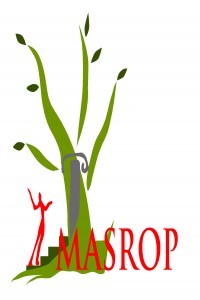Heraion Teikhos Kazılarında Bulunan Ok Uçları
Tekirdağ Karaevlialtı antik Heraion Teikhos kazılarında toplam 29 adet ok ucu bulunmuştur. Bu ok uçlarından kondisyonu değerlendirmeye uygun olan 23’ü incelenmiş ve bulundukları kültür katlarındaki diğer küçük buluntularda birlikte değerlendirilmiştir. Yerleşimin Akropolisi’nde sürdürülmüş olan kazılarda ele geçmiş olan ok uçları tunçtan ve demirden yapılmıştır. Tunç ok uçları genel olarak çift kanatlı, saplamalı ve üç kanatlı, kovanlı ok uçları olarak iki grupta demir ok uçları ise, gövdesi kare kesitli ve saplamalı, iki kanatlı ve saplamalı, üç kanatlı ve saplamalı olmak üzere üç grupta incelenmiştir. Ok uçlarının çoğunun yerleşimin parlak dönemlerini yaşadığı M.Ö. 4 yüzyıllar ve M.Ö. 2. yüzyıllara ait olduğu buluntu konsepti ile saptanmıştır. Heraion Teikhos yerleşimi bir Trak yerleşimidir. Ancak madencilikte başarılı olduğu bilinen bu halkın kullanmış olduğu ok uçlarının biçim ve ağırlık olarak Hellen yerleşimlerinde üretilmiş/kullanılmış ok uçlarının aynısı olduğu ve aynı tarihlerde kullanıldığı tespit edilmiştir. Antik yerleşimin Akropolisi’nden kazı çalışmalarından önceki yıllarda toprak çekilmiş olduğundan, M.S. 1. yüzyıl Heraion Teikhos ok uçları için tarihlemede bir üst sınır oluşturmaktadır.
Anahtar Kelimeler:
Çift kanatlı ok ucu, Üç kanatlı ok ucu, Mahmuzlu ok ucu, Kovanlı ok ucu, Uzun /kısa saplamalı ok ucu
Arrowheads Found During Excavations in Heraion Teikhos
During the excavations in Ancient Heraion Teikhos in Tekirdağ Karaevlialtı, a total of 29 arrowheads were found. 23 of these arrowheads whose conditions suitable to evaluate were examined and evaluated with the other small findings on their cultural floor. The arrowheads found in the ongoing excavations at the Acropolis of the settlement were made of bronze and iron. Bronze arrowheads are generally separated in two groups: Bilobate arrowhead with tanget and trilobate socketed arrowhead; iron arrowheads on the other hand separated in three groups as square cross-section arrowheads with tanget, two winged arrowheads with tanget, three winged arrowheads with tanget. It was determined by the concept of findings that many of the arrowheads belong to the glittering period of the settlement between the 4th and the 2nd century BC. Heraion Teikhos is a Thracian settlement. It was also determined that these people who were known with their success in mining, used the arrowheads the same in shape and weight as the arrowheads produced / used in the Hellenic settlements at the same time. Since the soil had been taken from the Acropolis of the ancient settlement in the previous year, the 1st century AD is the upper time limits for dating Heraion Teikhos arrowheads.
Keywords:
Bilobate arrowhead, Trilobate arrowhead, Arrowhead with barb, Socketed arrowhead, Short /long tanged arrowhead,
___
- Atik, 2016: Atik, N., “Tekirdağ’da Traklar ve Antik Heraion Teikhos Kenti”, Arkeoloji ve Sanat 152, Mayıs-Ağustos 2016, 75-87.
- Atik, 2017: Atik, N., “Trak Mezarları”, Magma, Şubat, 14-15.
- Bishop 1985: Bishop, M. C. The Produktion and Distribution of Roman Military Equipment, BAR International Series 275, 1985.
- Davidson 1952: Davidson, G. R. Corinth XII The minor objects, American school of classical studies at Athens, Princeton New Jersey, 1952.
- Dimitrov 1991: Dimitrov, K., “Some new evidence and reflexions on the origin of arrowhead money in Thrace”, Quatrième Symposium International, Thracia Pontica, Sozopol, 6-12 Ekim 1988, Sofya, 1991, 205-208.
- Furtwängler 1906: Furtwängler, A., Aegina, Münih, 1906.
- Furtwängler 1906: Furtwängler, A., Die Bronzen und die übrigen kleineren Funde aus Olympia, Amsterdam, 1906.
- Gaitzsch 2005: Gaitzsch, W., Eisenfunde aus Pergamon. Geräte. Werkzeuge und Waffen, Berlin, 2005.
- James 2004: James, S., Excavations at Dura Europos, 1928-1937 Final Report VII, The Arm and Armour and the other Military Equipment, Londra, 2004
- Koçel Erdem 2006: Koçel Erdem, Z. “Tekirdağ Karaevlialtı (Heraion Teichos) Antik Kenti İthal Çanak Çömlekleri”, I. Keşan Uluslararası Sempozyumu, 15-16 Mayıs 2003, Keşan Sempozyumu Bildiri Tam Metinleri, Keşan, 2006, 46-52.
- Koçel Erdem 2007a: Koçel Erdem, Z., “MÖ 4. yüzyıl Kerch Vazoları Üretimleri”, SERES 2007, IV Uluslararası Katılımlı Seramik, Cam, Emaye, Sır ve Boya Semineri, Eskişehir Seramik Sempozyumu Bildiriler Kitabı I, 26-28 Kasım 2007, 292-307.
- Koçel Erdem 2007b: Koçel Erdem, Z., “The Red Figure Vases From Tekirdağ Karaevlialtı (Heraion Teichos)”, 10th International Congress of Thracology, the 10th International Congress of Thracology, Thrace in Graeco- Roman World, Atina, 2007, 155-163.
- Payne 1940: Payne, H., Perachora I, Oxford, 1940.
- Petrie 1917: Petrie, W. M. F., Tools and Weapons, Londra, 1917.
- Richter 1915: Richter, G. M. A., Greek Etruscan and Roman Bronzes, New York, 1915.
- Robinson 1941: Robinson, D. M., Excavations at Olynthus. X. Metal and Minor Miscelleaneous Finds, Oxford, 1941.
- Yağız 2007: Yağız, M. O., “Anses d’Amphores Timbrées Trouvées à Tekirdağ - Karaevlialtı (Ancien Héraion Teichos)”, Proceedings of the 10th International Congress of Thracology, Komotini –Alexandroupolis, 18-23 Ekim 2005, Atina, 2007, 698-704.
- Yağız 2009a: Yağız, M. O., “Les Monnaies du Roi Thrace Mostis”, Fourth Forum on Calligraphy, Writings, Inscriptions and Coins in the World, International 16-18 Mart 2009, İskenderiye, 2009, 65-70.
- Yağız 2009b: Yağız, M. O., “Heraion Teikhos Damgalı Amphora Kulpları”, AST 26, Ankara, 2009, 457-472.
- Yağız 2016a: Yağız, M. O., “Coin Circulation in the Rhaidestos Region during the Classical, Hellenistic and Roman Periods”, Rhaidestos-Thessaloniki, Antiquities in a Refugee Journey, Selanik, 2016, 228-241.
- Yağız 2016b: Yağız, M. O., “Tekirdağ Arkeoloji Müzesi Sikke Koleksiyonunda yer alan Doğu Thrak Krallarına ait Sikkeler”, Kaunos/Kbid Toplantıları, 3, Anadolu Nümismatik Araştırmaları Çalıştayı, Anadolu, Ek Dizi I. 3, Ed. Z. Ç. Öğün, Ankara, 2016, 61-74.
- Yağız baskıda: Yağız, M. O., “Les Monnaies d’Héraion Teichos avec l’Inscription HPAI”, Eleventh International Congress of Thracology, Istanbul, 8-12 Kasım 2010, baskıda.
- Yayın Aralığı: Yılda 2 Sayı
- Başlangıç: 2007
- Yayıncı: Uğur ALANYURT
